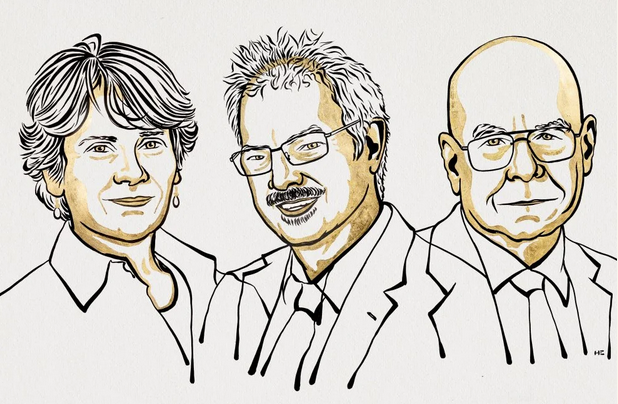5 October 2022
Inventors of “Click Chemistry” Awarded Nobel Prize in Chemistry 2022
You are accessing a machine-readable page. In order to be human-readable, please install an RSS reader.
All articles published by MDPI are made immediately available worldwide under an open access license. No special permission is required to reuse all or part of the article published by MDPI, including figures and tables. For articles published under an open access Creative Common CC BY license, any part of the article may be reused without permission provided that the original article is clearly cited. For more information, please refer to https://www.mdpi.com/openaccess.
Feature papers represent the most advanced research with significant potential for high impact in the field. A Feature Paper should be a substantial original Article that involves several techniques or approaches, provides an outlook for future research directions and describes possible research applications.
Feature papers are submitted upon individual invitation or recommendation by the scientific editors and must receive positive feedback from the reviewers.
Editor’s Choice articles are based on recommendations by the scientific editors of MDPI journals from around the world. Editors select a small number of articles recently published in the journal that they believe will be particularly interesting to readers, or important in the respective research area. The aim is to provide a snapshot of some of the most exciting work published in the various research areas of the journal.
Original Submission Date Received: .
The Nobel Prize in Chemistry 2022 has been jointly awarded to Carolyn R. Bertozzi (Stanford University, USA), Morten Meldal (University of Copenhagen, Denmark) and K. Barry Sharpless (Scripps Research, La Jolla, USA).
The trio laid the foundations for creating useful molecules by combining simple building blocks through a straightforward and efficient chemical reaction, an approach which they termed click chemistry. The idea is that the resulting molecules do not need to be exact replica of natural molecules in order to be functional. Especially in the development and production of pharmaceuticals at scale, click chemistry has brought about many advances.

Bertozzi, Meldal, Sharpless (from left to right) © Nobel Media
“This year’s Prize in Chemistry deals with not overcomplicating matters, instead working with what is easy and simple. Functional molecules can be built even by taking a straightforward route,” the Chair of the Nobel Committee for Chemistry, Johan Åqvist, said.
The copper-catalyzed reaction Professor Meldal and Professor Sharpless discovered independently makes basic molecules “snap together quickly and efficiently” and is “utilised in the development of pharmaceuticals, for mapping DNA and creating materials that are more fit for purpose”, according to a statement by the Royal Swedish Academy of Sciences.
Carolyn Bertozzi is the eighth woman to win the prize in chemistry and a champion of open access publishing. In her seminal research, she succeeded in developing chemical tools based on click chemistry that help to study human and animal physiology in new ways. In particular, she came up with so-called bioorthogonal reactions which are so selective they do not interfere with surrounding processes in living organisms. Targeting tumors by breaking down their camouflage is one highly important application.
Barry Sharpless is only the second person to be awarded the chemistry prize for a second time, having already been honored in 2001 for previous breakthrough discoveries.
Congratulations to all of this year’s winners and a special nod to Professor Sharpless who is a one-time author in Molecules!
Díaz, D.D.; Converso, A.; Sharpless, K.B.; Finn, M.G. 2,6-Dichloro-9-thiabicyclo[3.3.1]nonane: Multigram Display of Azide and Cyanide Components on a Versatile Scaffold. Molecules 2006, 11, 212-218. https://doi.org/10.3390/11040212.
